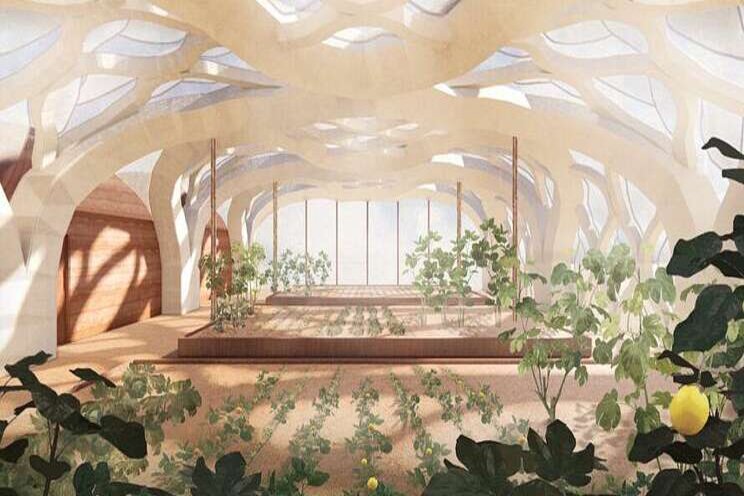Inflatable bamboo greenhouses for sustainable farming
Added on 02 November 2020


Created as part of her school's Architectural Productions module that emphasizes biomimicry in designs, Hague's shellac-coated bamboo greenhouse proposal follows her studio's focus on challenging unsustainable architectural structures with nature-inspired alternatives. Polythene sheeting is currently the most popular greenhouse covering material in India. However, it needs replaced every year, which leads to excessive plastic waste.

Hague minimizes the environmental footprint of her design proposal by using locally sourced bamboo and natural resins extracted from trees. The paper-like bamboo covering is coated with shellac resin for weather-resistance. Hague also took inspiration from the Mimosa Pudica plant in redesigning the greenhouse structure, which would be built with collapsible beams and "inflatable origami hinges" so that the building could be flat-packed and easily transported. Once on site, the greenhouse would be inflated with air, covered with the bamboo-shellac material and fitted with expandable black solar balloons that would sit between the infill beams and cladding for the hinges to promote natural ventilation.
"The tutors in Design Studio 10 encourage you to analyse what it means to be truly sustainable in architecture, rather than integrating sustainability as a generic requirement which is often seen throughout the industry," Hague said to the University of Westminster. "This helped to develop my project into something that challenges the suitability of widely used materials and current lifestyles."
Images via University of Westminster
Source: Inhabitat
Source: Inhabitat
More news















